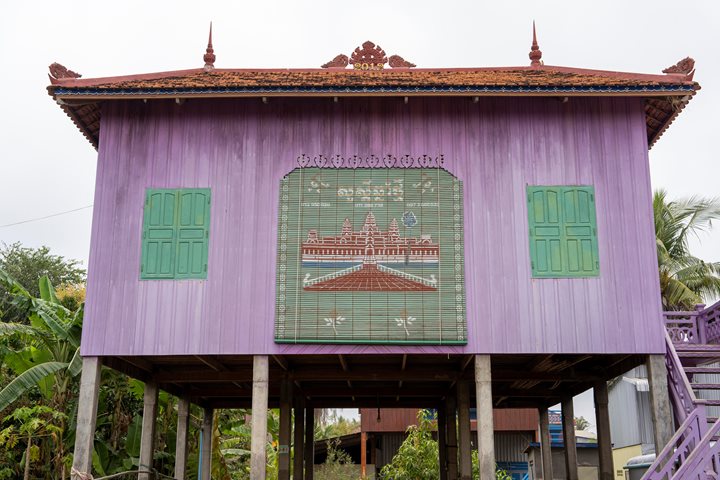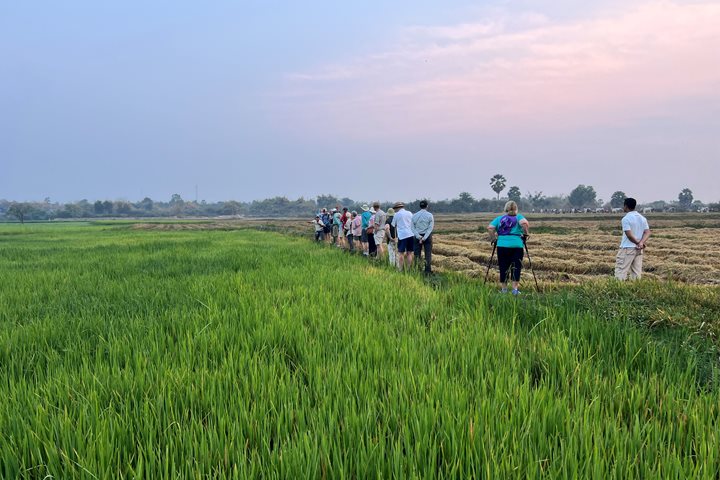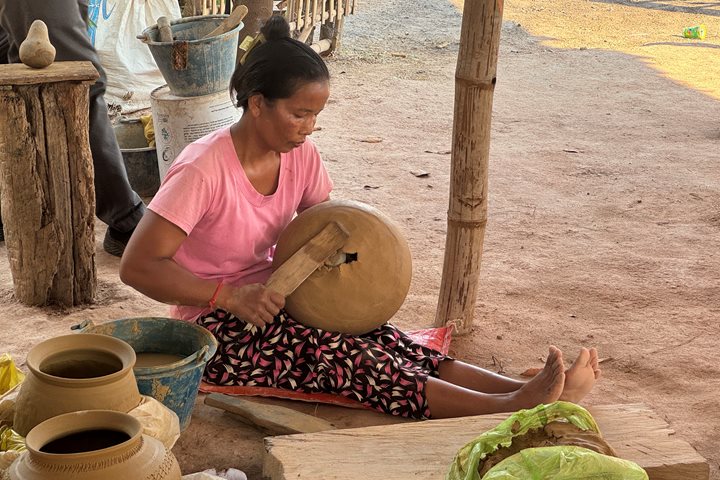Our travel on water reached its end on April 20 in Kompong Cham as we left by bus for Siem Reap.
This long travel was made very pleasant by our new guides’ comments. Till then we had approached the landscape from the water way, but from April 20th on the road was to shape our vision and had indeed a lot to offer to our senses.
The succession of various patterns of houses, different cultivations (cashew, rubber) being the counterparts of the omnipresent rice field were an excellent pretext to evoke the diversity of Cambodia.
A highly interesting part of the travel was the stop at the Kompong Kdei Bridge. Built in the 12th century under the reign of the great king Jayavarman VII, this massive structure is here to remind us that the road we take to go to Siem Reap is a former royal way.
If Kompong Kdei is by far the most impressive work, it doesn’t stand alone and the careful observer will notice the presence of many other little bridges all along the road.
As usual the arrival at Siem Reap coincides with the discovery of the temples. The task is not a simple one. All the Angkor regular visitors remember with emotion their very first vision of the temples: a unique instant of happiness not to be spoiled.
For this first discovery, the choice of Ta Prohm was a very wise one indeed. This early 13th century temple built under the reign of Jayavarman VII in 1186 offers a striking but realistic first impression.
Even if the vegetation was to cause so much damage to the temples of Angkor, The Ecole Française d’Extrême-Orient (EFEO) felt obliged to leave at least one temple in Angkor as an example of the “natural state” that so marveled the early explorers. The result was Ta Prohm as we know it today: an imposing mass of stones that had best merged with the jungle but not yet to the point of becoming a part of it.









